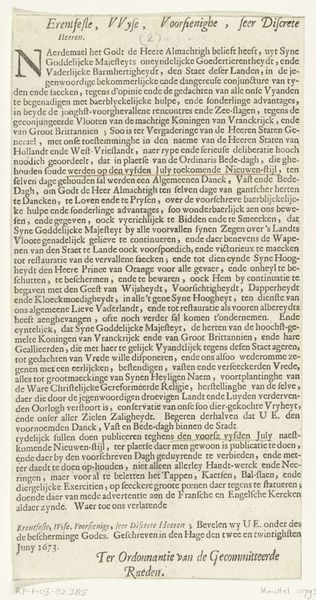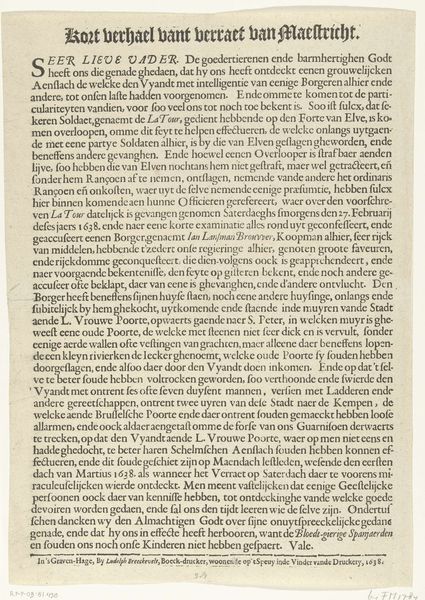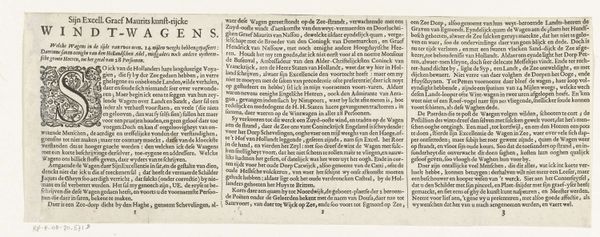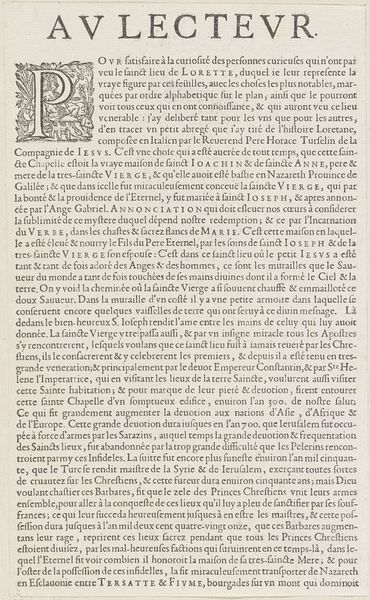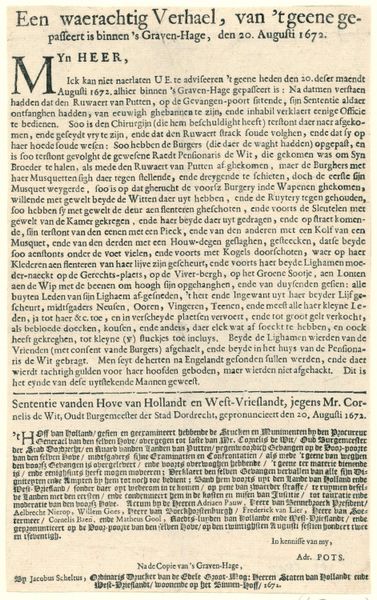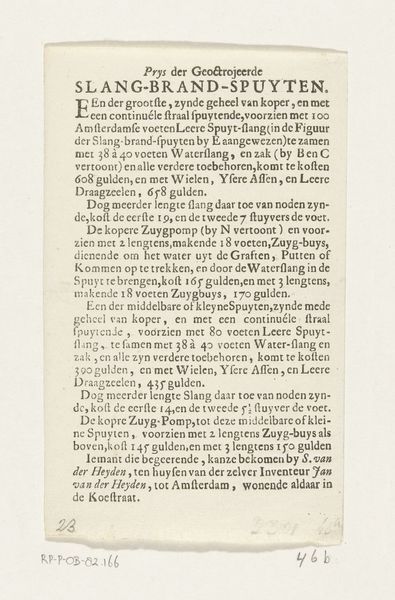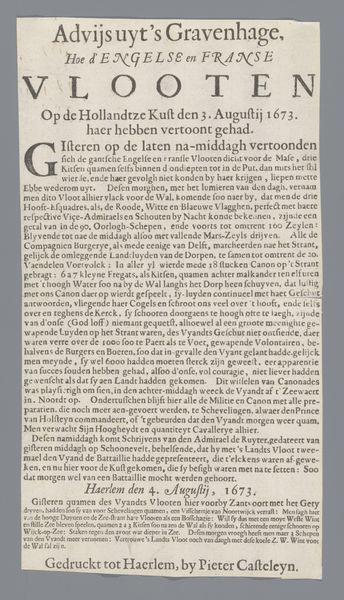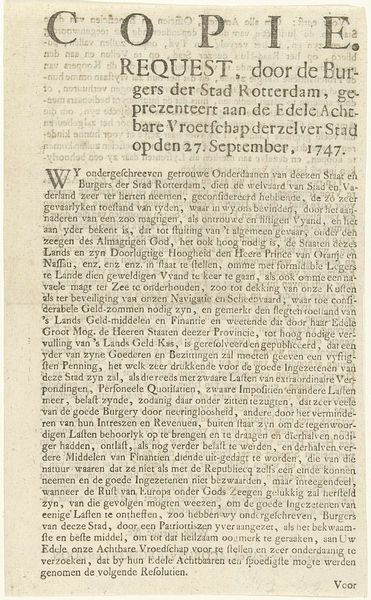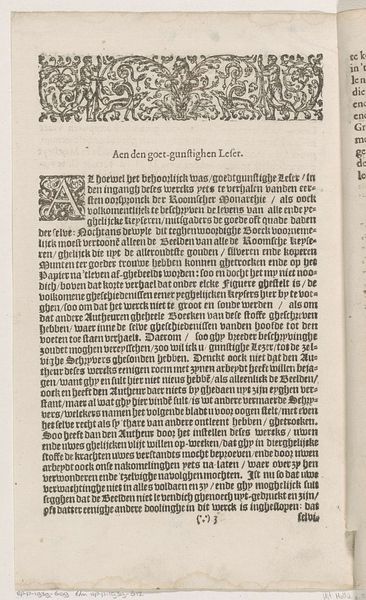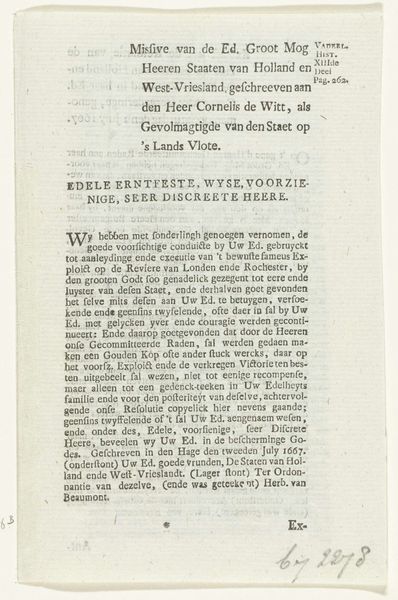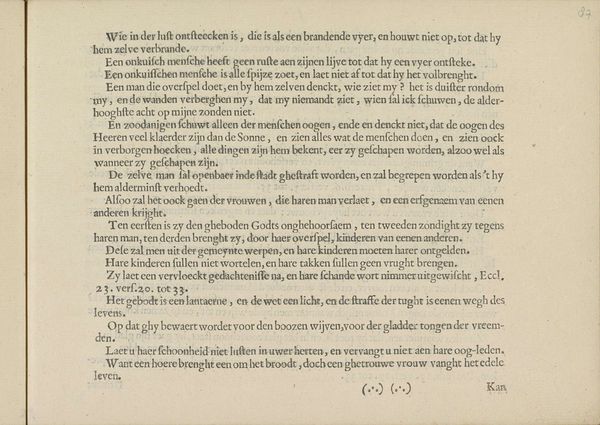
Uitschrijving door de Staten van Holland en West-Friesland van een dankdag voor de overwinningen in de zeeslag van augustus 1673 1673
0:00
0:00
print, textile
# print
#
textile
#
newspaper layout
Dimensions: height 269 mm, width 153 mm
Copyright: Rijks Museum: Open Domain
Curator: This document, "Uitschrijving door de Staten van Holland en West-Friesland van een dankdag voor de overwinningen in de zeeslag van augustus 1673," dated 1673, is currently held at the Rijksmuseum. It’s a print on textile—an announcement, essentially. What strikes you about it? Editor: It looks like a newspaper layout. It's dense, all text, and feels very formal. I imagine it was an important public notice, but I'm having trouble making sense of it. What's its significance? Curator: Indeed. This is a pronouncement by the States of Holland and West Friesland, calling for a day of thanksgiving after a naval victory against England and France. Consider the socio-political climate: this victory reinforced Dutch independence against formidable European powers. Now, why do you think they chose textile for this message, and how does this material choice intersect with themes of power, religion, and cultural identity in the Dutch Golden Age? Editor: Hmmm. Using textile seems deliberate... It feels like it elevates the announcement, lending it more permanence and importance compared to just paper. Curator: Precisely! Textile prints at the time carry significations beyond the mere text; it suggests a desire for broader accessibility to the public through multiple reproductions, and it signifies a weaving together of the fabric of society around national identity, Dutch Calvinist values, and patriotic sentiments in response to geopolitical challenges. What sentiments resonate with you? Editor: So, it's not just about reporting the news, but also about reinforcing a collective identity, celebrating strength, and establishing authority. Curator: Precisely! It speaks to how carefully constructed messages of the time created unifying narratives, defining "us" against "them". We can observe power relations at play! The religious invocation alongside naval supremacy frames Dutch triumph within a narrative of divine favour. How does reflecting on such objects inform your views about contemporary news and the manufacturing of consent? Editor: It highlights how seemingly straightforward messages always carry deeper agendas, working to shape our perceptions and solidify existing power structures. I will examine my news feeds with new critical awareness of rhetoric! Curator: Exactly. Historical texts can unveil the strategies nations employed in their formative years, echoing loudly into the media landscape of today.
Comments
No comments
Be the first to comment and join the conversation on the ultimate creative platform.
